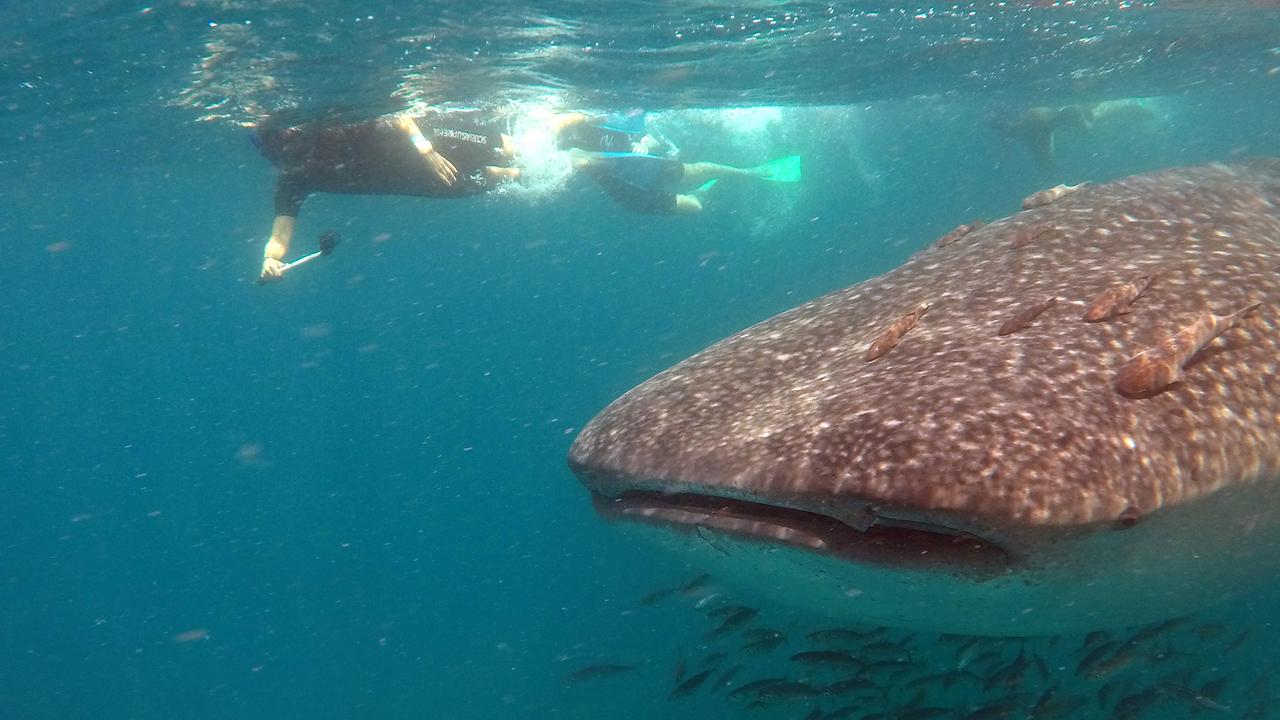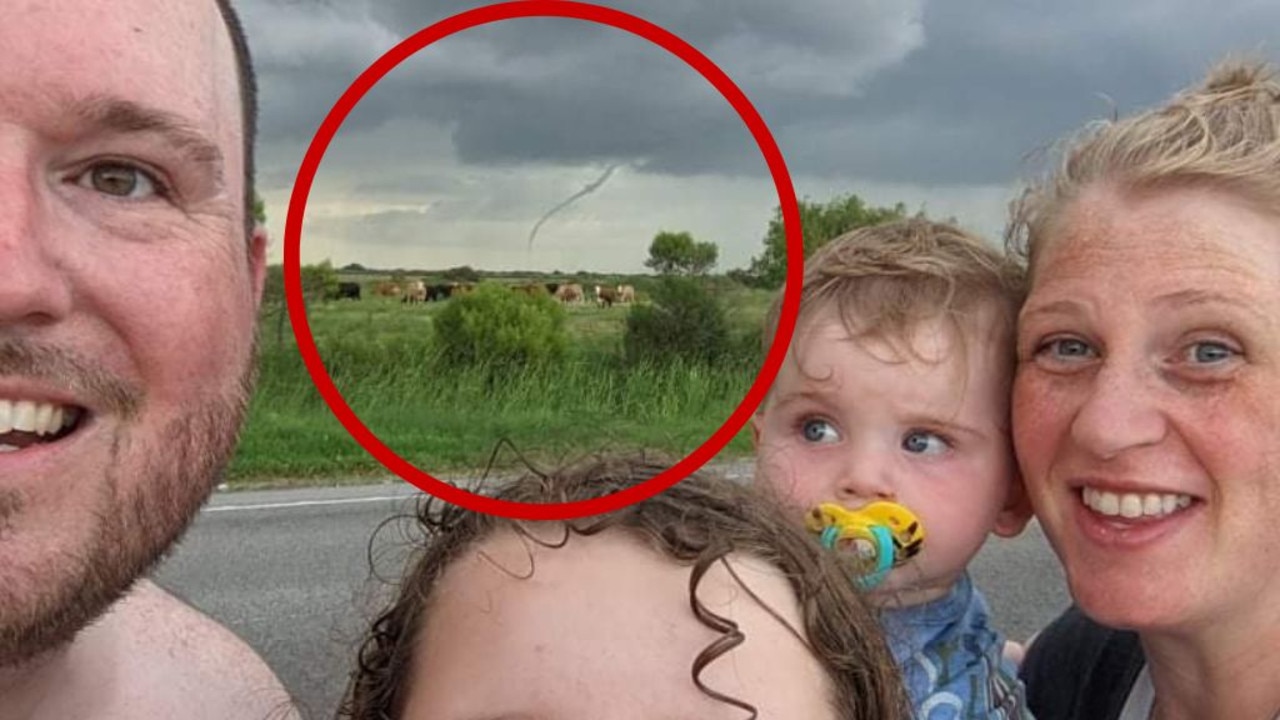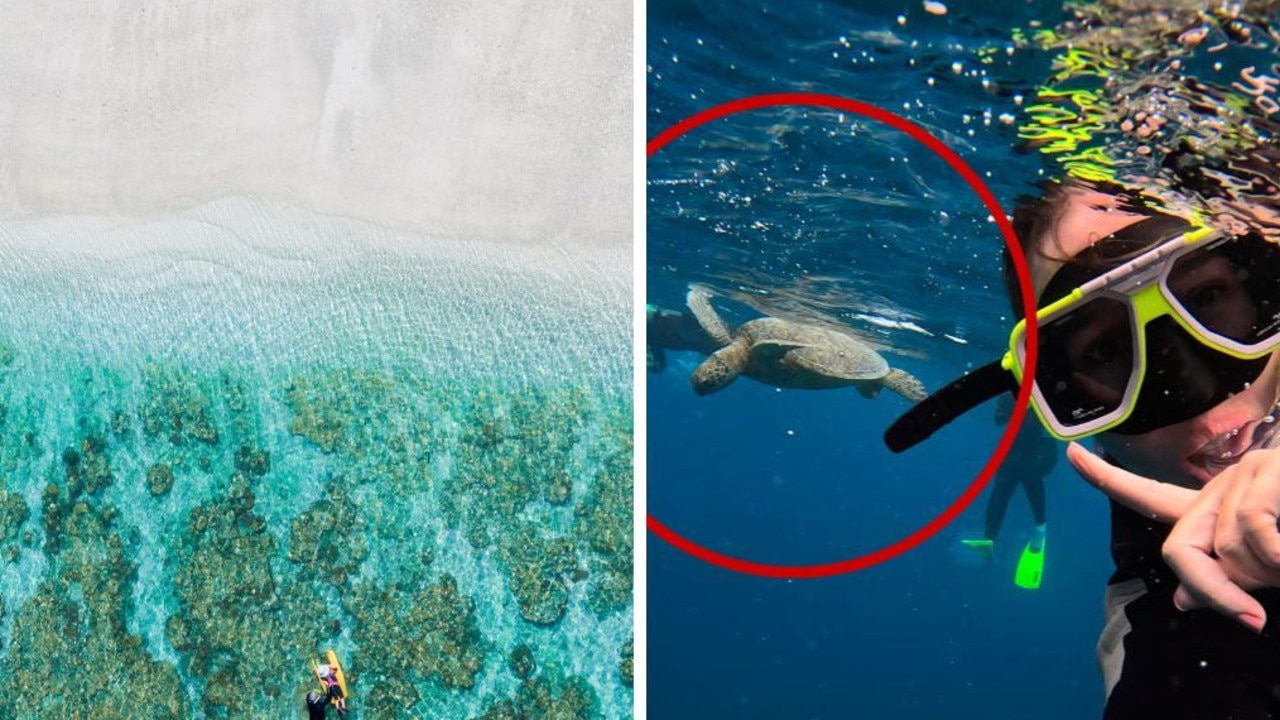The moment I went diving with the world’s biggest shark
When a terrified snorkeller surfaced in the middle of the dark ocean, she saw the captain shouting and pointing to a 10-metre creature from the boat.
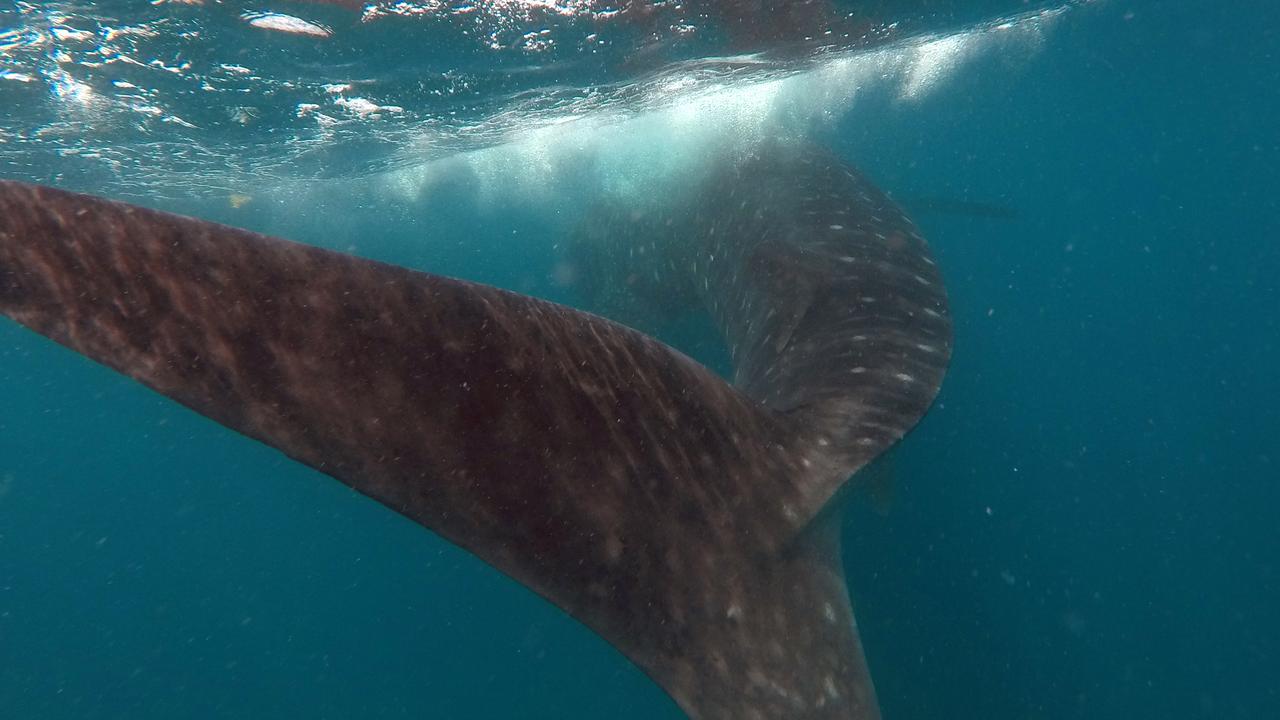
As we skimmed across the Gulf of California, leaving the port of La Paz in our wake, our captain had his eyes glued to the water around us.
He had a single phrase on repeat.
“Look for the shadows, everyone,” he said as our boat bounced over the waves, leaving the Mexican coastline behind us. “Keep looking for the shadows.”
The water was at peak clarity for our adventure, but our sight was quickly swallowed by the deep blue around us, obscuring anything more than a few feet deep.
“Keep your eye out for a fin … you won’t miss it,” he said as I tugged on my wetsuit and slipped on a pair of flippers.
When it comes to fear, I don’t have many on my list. I grew up in the bush, so I don’t mind snakes. I’m the spider-catcher in our household and when it comes to heights — I’ll see you at the top.
But being in the middle of the ocean, preparing myself to dive into the deep unknown hunting for big, dark, slowly moving “shadows” — I’d rather be on the beach with a margarita in hand.
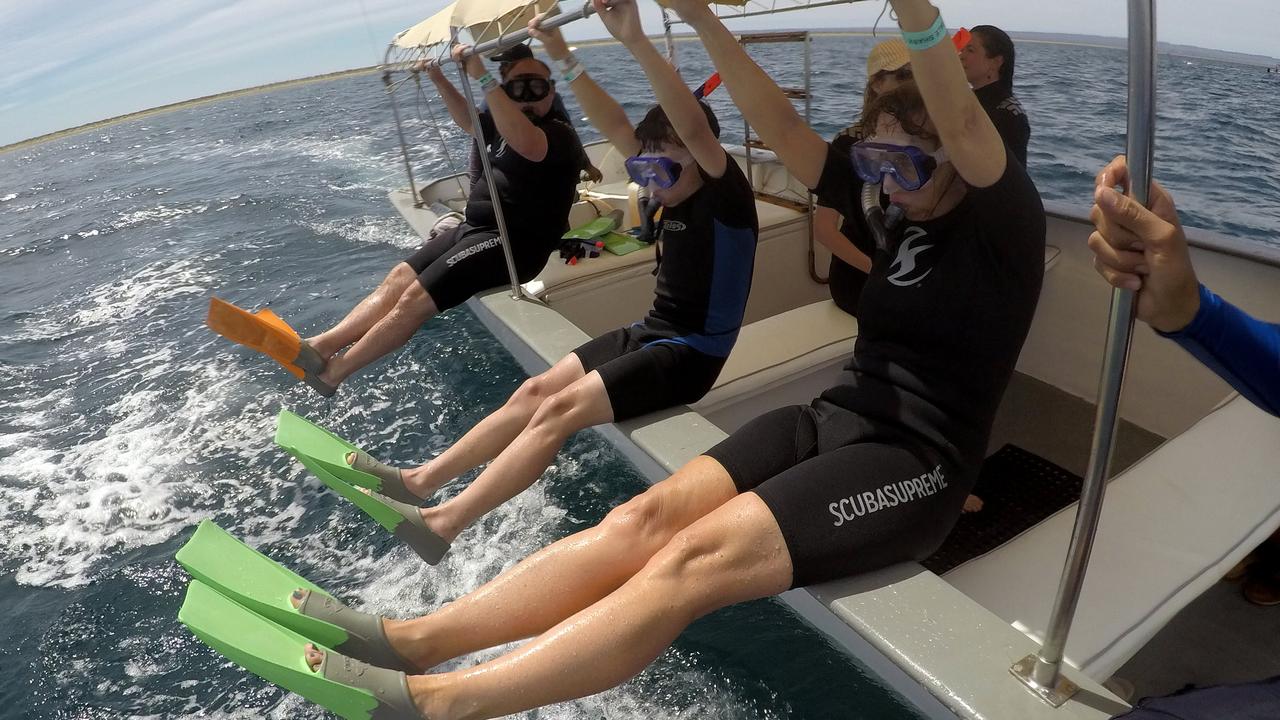
I’d been promised this dive with the world’s biggest shark would be like nothing I’d ever experienced, an encounter with nature many will only dream of.
As the single engine skiff wooed to a halt, the water bobbed around us waiting for our next move. Our captain, who we nicknamed “Ryan” because of his uncanny vocal resemblance to Ryan Gosling, stood on the bow pacing back and forth, his eyes shifting from one side of the boat to the other.
“Ladies, get ready,” he shouted at us, as we scrambled on to the side of the boat, our flippers dangling over the edge. “When I point, you jump, you hear? When I point, you jump.”
All I could see was the slow moving mass and a large fin weaving around our boat which, in comparison, was smaller than the creature gliding below.
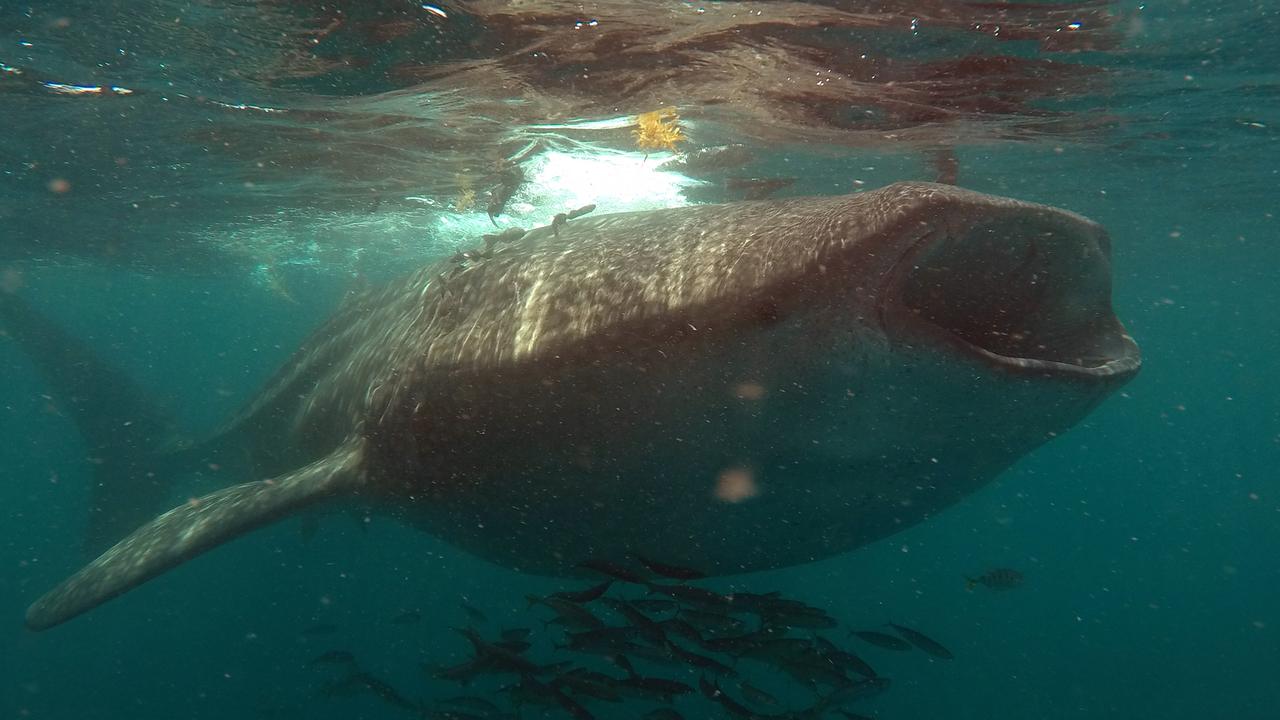
I wanted to tap out. No selfie was worth being swallowed by this “gentle giant” cruising below the surface. But before I knew which way was up, Ryan’s pointing started.
“You, jump,” he shouted at the young American next to me, who slid in to the water with ease.
“Now, you go, jump!” his hand waving in my direction.
Plunging in to the water feet first, I can’t decide who got more of a fright. Me, or the 10m long whale shark who was met with a giant shrill, flailing flippers and a face full of panic bubbles.
As I surfaced, I clocked the boat behind me. The captain and a few others pointing to the shark and yelling at me to swim. Not away, but towards it.
As I cleared my goggles and peered back in to the water, I could see the sway of a giant tail sweep past me and into the cloudy water ahead. He’d gone, but his friends weren’t far behind.
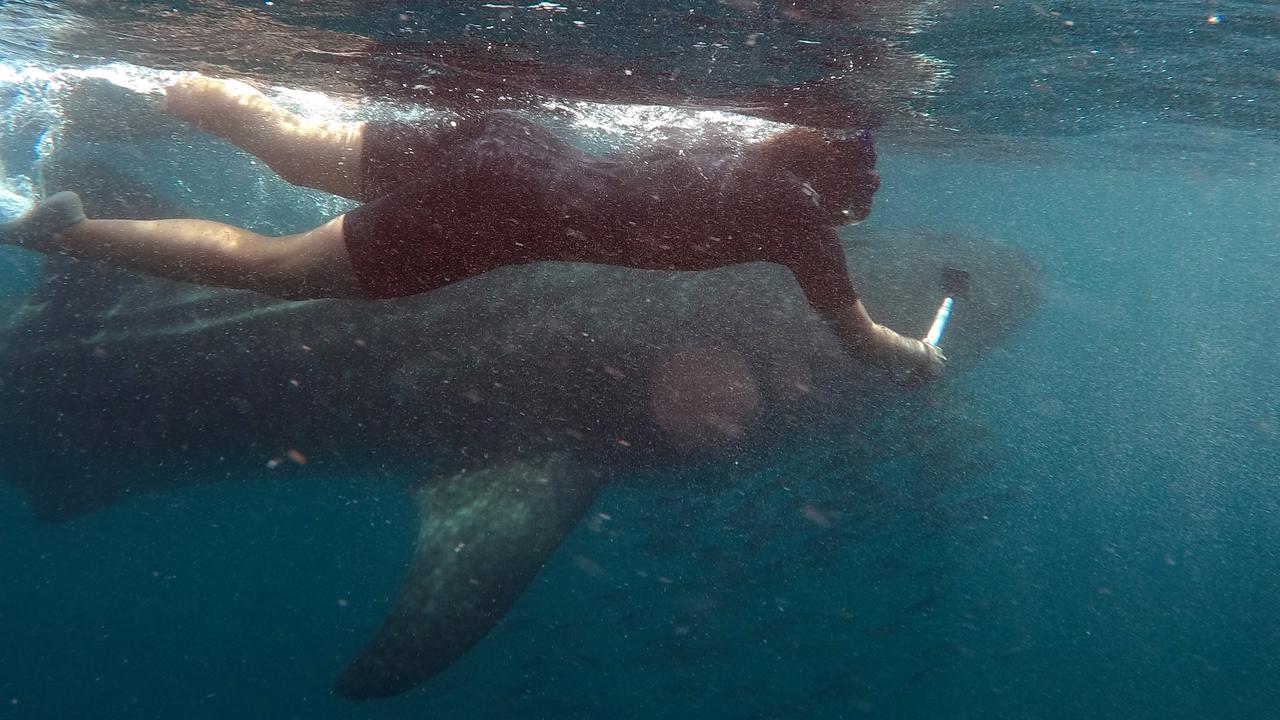
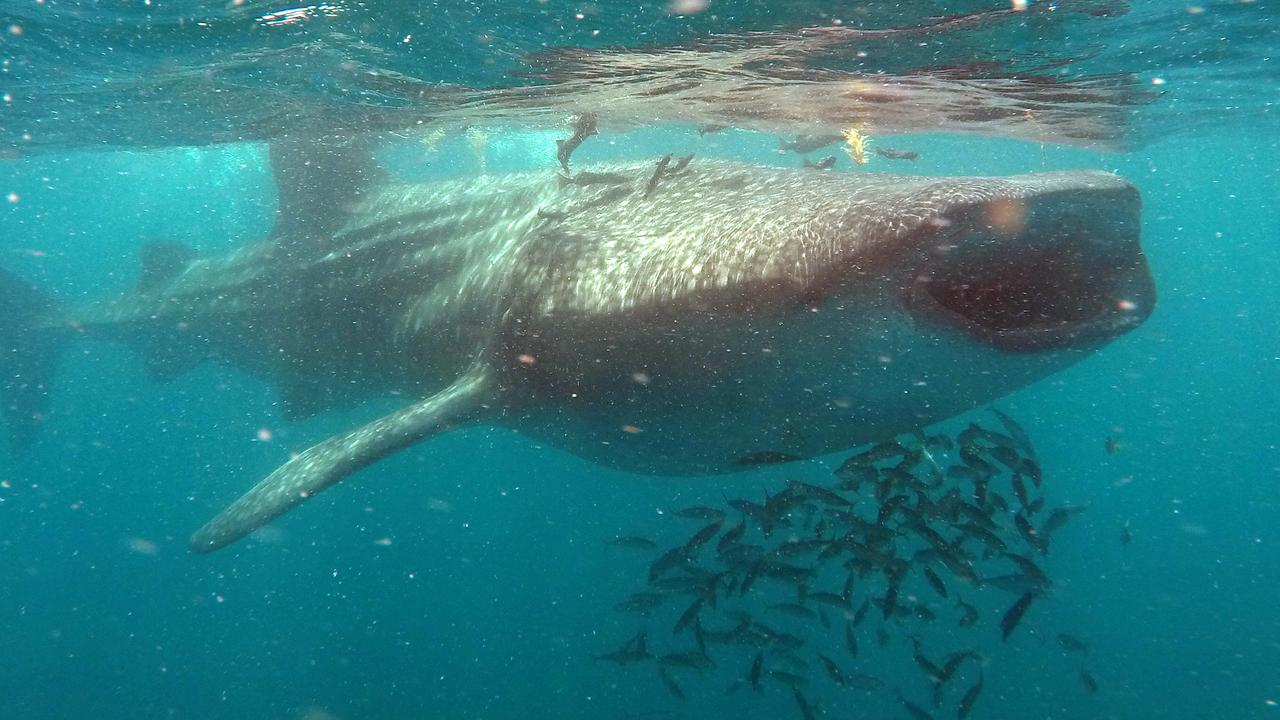
As I climbed back in to the boat, my heart pounded in my ears. The shock of the shark’s size had overwhelmed me, but despite my initial freak-out, I wanted to get back in.
As we hovered across the waves, we spotted another fin cruising on the surface.
“This one is feeding,” Ryan (whose real name is Alex from Cabo Adventures) shouted before jumping in to the water.
“This is the golden ticket!”
As far as whale shark swimming goes, witnessing one of these giant fish during lunchtime is a real treat. Not just for the shark, but for slower swimmers as well.
Like submarines cruising through the water, these creatures don’t have a mean bone in their 35ft body. They are aware you’re in their home, but it’s like they don’t really care.
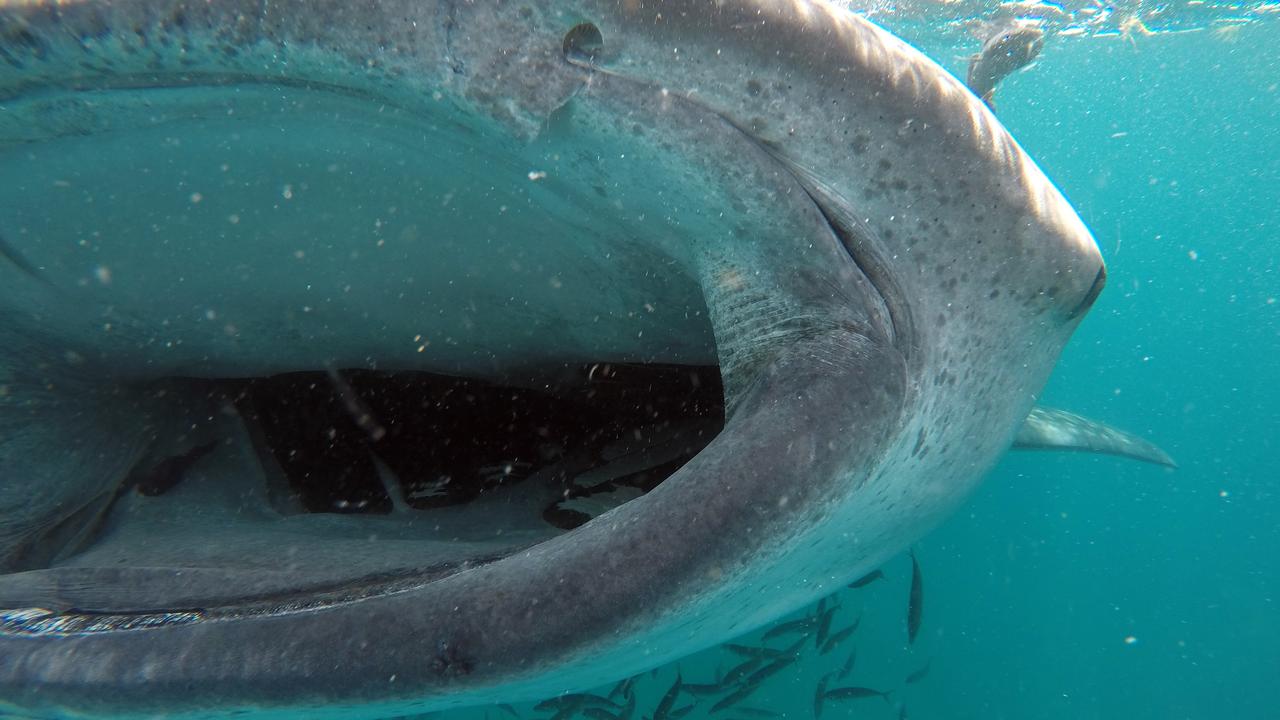
As their mouths gape open and they inhale their food, you can’t help but feel you might be sucked in too — just like that poor bloke in South Africa who suddenly realised a whale had swallowed him whole.
While he hoovered plankton, I was able to get up close and personal — but not too close.
Over the past few years, an abundance of tour operators have been taking tourists from all over the peninsula to see this creature in their natural habitat. The demand to swim with the sharks is remarkably high, as this is one of the few places on Earth where sightings are pretty much 90 per cent guaranteed at the right time of year.
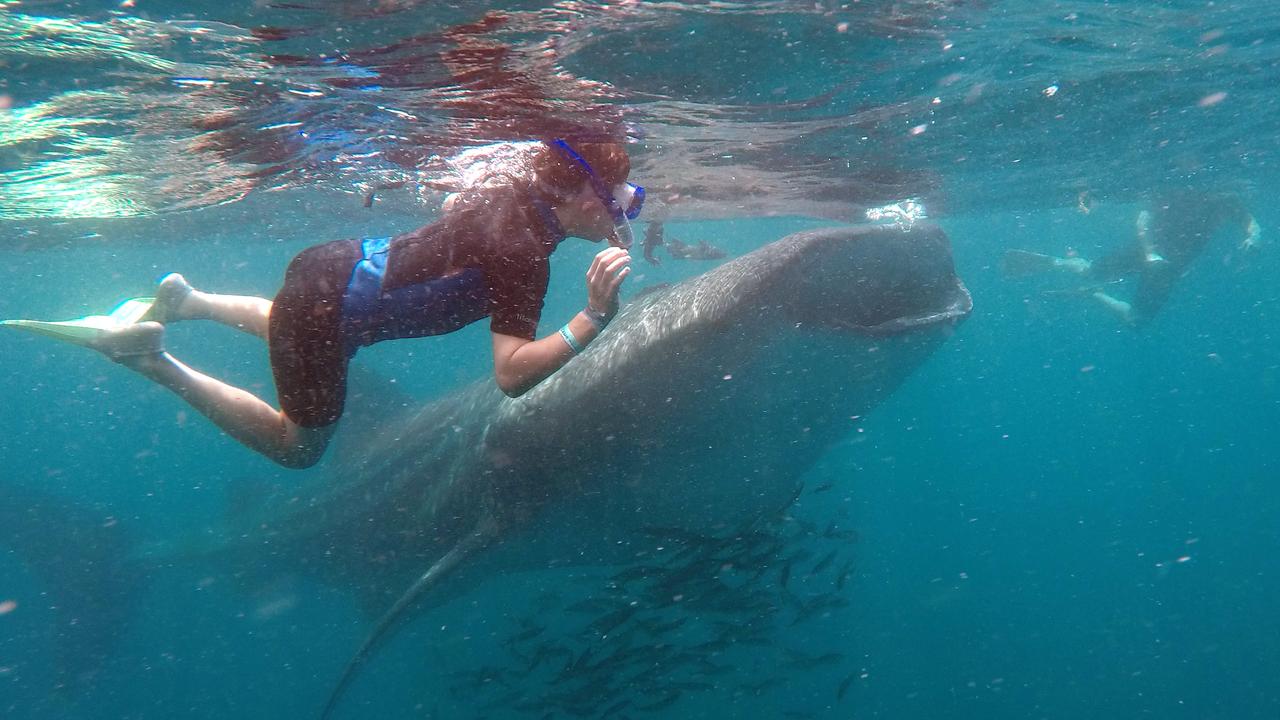
And while tour operators congregate around this part of Mexico in droves, strict new regulations have been put in to place to keep the sharks protected and coming back each year. This includes staying three metres away from their head, and having no more than seven people in the water with one shark at a time.
The regulations don’t apply to other parts of the world, where some swims throw the rule book out the window so tourists can get as close as they want to the giant fish.
But in La Paz, protecting these creatures is crucial — not only for their sake, but for the state of the tourism industry of the small fishing village.
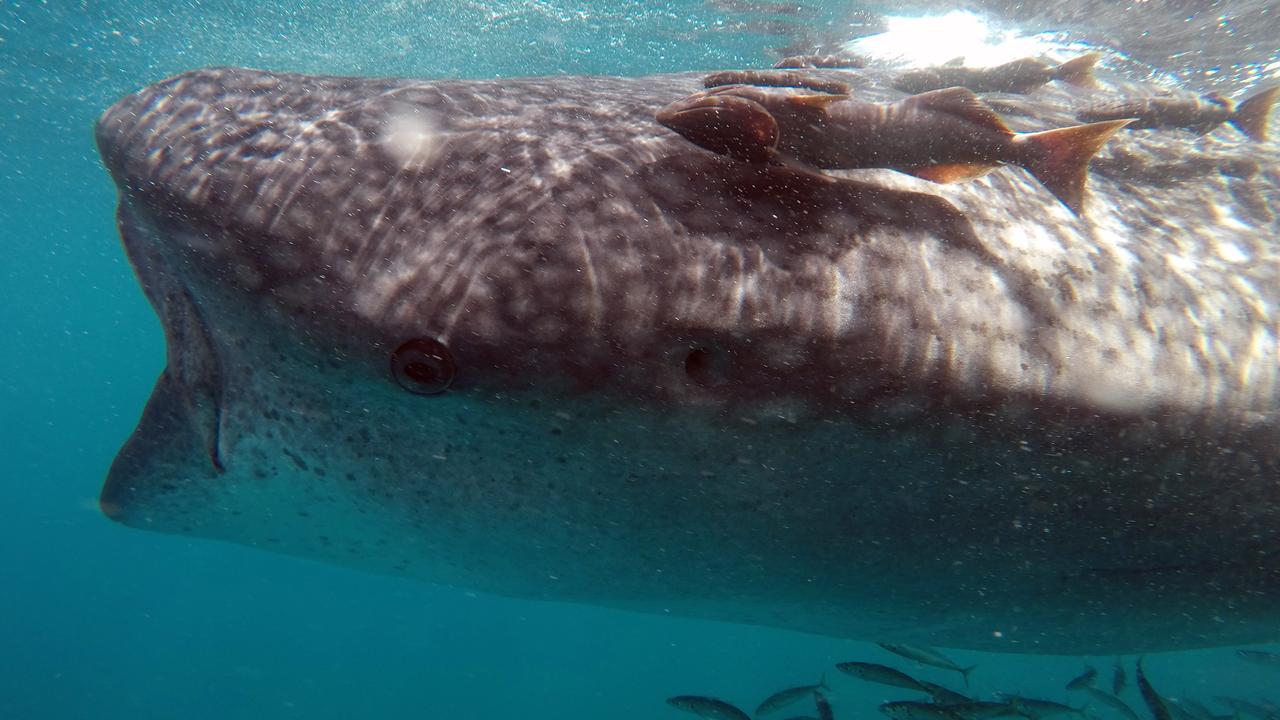
By the time his lunch was over, we’d spent two hours in and out of water. Strict local laws meant we needed to move along to allow other swimmers to experience what we had just witnessed, and give our hands time to de-prune in the sun.
As we cruised back to port, my nerves had vanished. The angst of the unknown had gone.
And despite these creatures having around 3000 teeth laid bare with each approach, I somehow lost all fear.
Vanessa Brown travelled to Los Cabos as a guest of Los Cabos Tourism.
